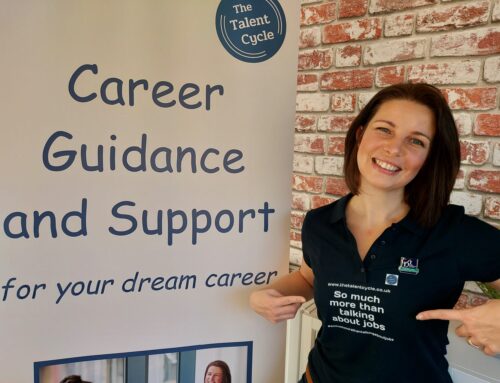With the recent presentation of the new iCeGS (International Centre for Guidance Studies) paper ‘Investing in Careers. What is career guidance worth?’, by Tristram Hooley, Chris Percy and Siobhan Neary, presented at parliament, the importance of investment in careers is plain to see. The report aimed at engaging policy makers in funding and improving the careers guidance systems, explains that for every pound spent on youth guidance in England, the country could expect a return of £2.50, or £3.20 if the support was for unemployed adults*. With careers guidance playing such an important role in the country’s future, you’d be forgiven for thinking that working in the careers sector would be a popular career choice. Unfortunately, you’d be wrong.
Research from the Career Development Institute (CDI) and Careers England highlights that a worrying number of people are leaving the sector; there is a higher-than-average turnover, and no new talent pipeline. I asked some careers professionals why they think that is, and what the careers sector can do about this.

An unhelpful legacy
There are many challenges with keeping talented colleagues in the sector, from pay/conditions to frustration over unqualified individuals selling services. One central challenge, however, is that the sector is either misunderstood or invisible. There is a disconnect between what careers professionals actually do, and what the general public thinks they do. We’re also often faced with the complaint of ‘I never received good careers advice at school’, so we must keep raising the profile of what was ‘then’ and what is happening ‘now’.
Jamie Pywell, Managing Director of MYPATH believes part of the problem is legacy. ‘For a long time, careers roles were traditionally filled as an “add-on” for roles such as librarians, so particularly in schools, the sector had people working in it who didn’t always want to be there. Now we’re seeing a tide-change of skilled, passionate, and qualified professionals. We just need to let others know that has happened.’
Indeed Chris Webb, Careers Consultant and host of #WeAreCareers, feels that sharing the work we do with a wider group via partners is crucial to the success of this. ‘The career development world can often be an echo chamber, so when it comes to raising the profile of our work it is important we utilise the advocacy of other professionals and organisations that we might be partnering with. This could be school-based careers professionals building relationships with other student support staff to influence students, parents and carers, or Career Development Professionals encouraging their employer contacts to share the careers events they have been involved with.’
Better marketing is key
If the problem is an image one, how else do we market our real image? Jamie suggests, ‘it’s important to consider all groups we are trying to market to; not only those who might pay for our services (such as a school) but also those who we want to engage in the act of careers work (the young person). With 20% of young people absent from school, we need to consider the careers model itself, and then how we appropriately market that.’
Indeed, young people need to be reached, to engage them in their own support and as potential new recruits to the sector. How we engage and inspire them is crucial. Jake Richings, Director of Authentic Engagement, agrees. ‘Digital content is now the most likely influencing factor for young people’s career aspirations**. If we aren’t digitally visible and available as a sector, we’re putting ourselves at a disadvantage against the thousands of other careers young people could consider themselves doing. The evidence is already there with 4 billion+ views of #CareerAdvice on TikTok.’ Even the recent Education Select Committee report into Careers Education Information and Guidance*** referenced the need for the use of technology in careers work to engage young people, stating the National Careers Service website should have ‘content appropriate and accessible to young people’.
However, it’s not just young people: professionals from other sectors, including HR/learning and development and healthcare, who have similar skill sets and values could be targeted to attract them into the careers sector. Again, we must consider our target audience and then how we reach them.
Explaining the sector
It’s not only important that people see what we do, they also need to understand the importance and impact of it. Our marketing messages need to focus less on methodology and more on the value our services have added, their impact on the lives of our clients and where they’d be without them. This will help engage clients and would-be careers professionals alike.
For these new recruits, better clarity about the roles and qualifications within the sector is crucial. Sue Edwards, Senior Lecturer and Careers Professional, explains this can be confusing. ‘Historically, the entry route to the profession was clear-cut and straightforward. Since the responsibility for careers services was taken out of the hands of Local Education Authorities, a range of qualification routes into the sector have emerged. On the one hand that’s good as it helps to increase accessibility to this highly satisfying career, but on the other it makes it very confusing. Not only for the prospective career development practitioner, but also to employers, schools, colleges, and the teachers/staff the careers practitioner works with.’
For many professionals I spoke with, this clarity on career pathways is essential for new recruits and those already in the sector wanting to develop their own careers. Alyce Harris, a Pathways and Employability Lead, also believes a re-brand of terms like ‘Careers Lead’ and ‘Careers Adviser’ to a more encompassing title such as ‘Careers Consultant’ will help to show the strategic nature of the role and give a more aspirational feel to the sector. ‘I believe we need further support from the bodies who represent us, to raise aspirations for careers professionals into senior roles that sit with Senior Leadership Team rather than middle managers. This is a better reflection of the work that is going on and gives those newer to the sector something to aspire to.’
To change the legacy of the past and be the best we can be, as well as develop in our careers, completing CPD and sharing with others is also imperative. Whether you’re attending the Careers in Careers Celebration Festival on 14th November 2023****, one of the many CDI events happening online or in person at the CDI Summit and Conference 2023 or some other development activity, let others know. And support others with their development too. Dr Oliver Jenkin of CSW Group explained that they are working on developing their own internal talent pipeline by ‘offering some of our Engagement Advisers the chance to do the Level 6 Diploma so that they feel valued and supported and are able to apply for Career Development Consultant roles when they appear’.
Whether it’s at this organisational level, or sector-wide, there is much we can do to better market and develop the talent pipeline of the careers sector.
References
** https://www.educationandemployers.org/wp-content/uploads/2018/01/DrawingTheFuture.pdf
*** https://committees.parliament.uk/publications/40610/documents/198034/default/
**** https://www.thetalentcycle.co.uk/careers/

Caroline Green is a Career Development Expert and Founder of The Talent Cycle, an organisation which supports individuals and organisations to achieve their career goals. She is a Registered Career Development Professional (RCDP), MBTI practitioner, qualified coach, and L&D professional (CIPD). With 18 years spent in the sector, she advocates for and on behalf of it, often featuring as a speaker and guest writer.





